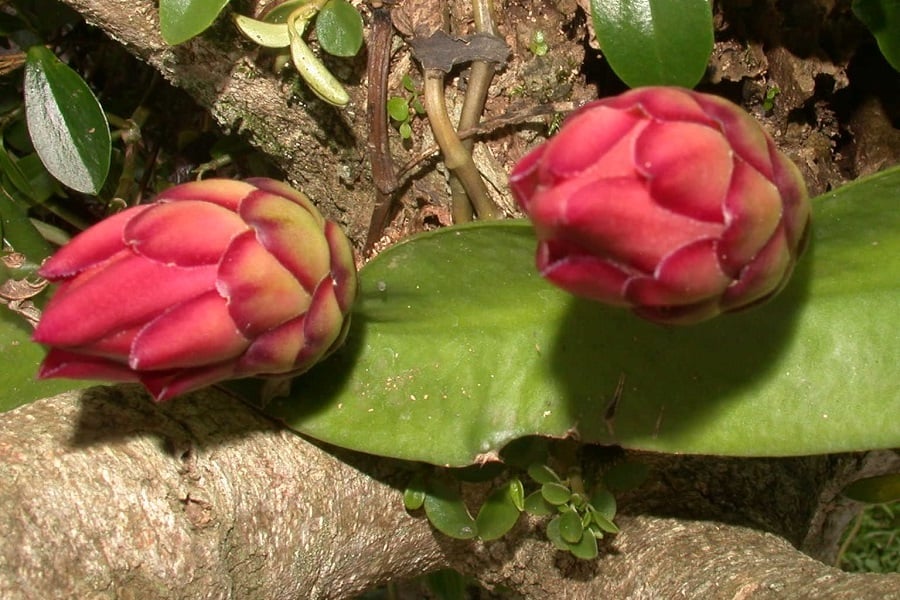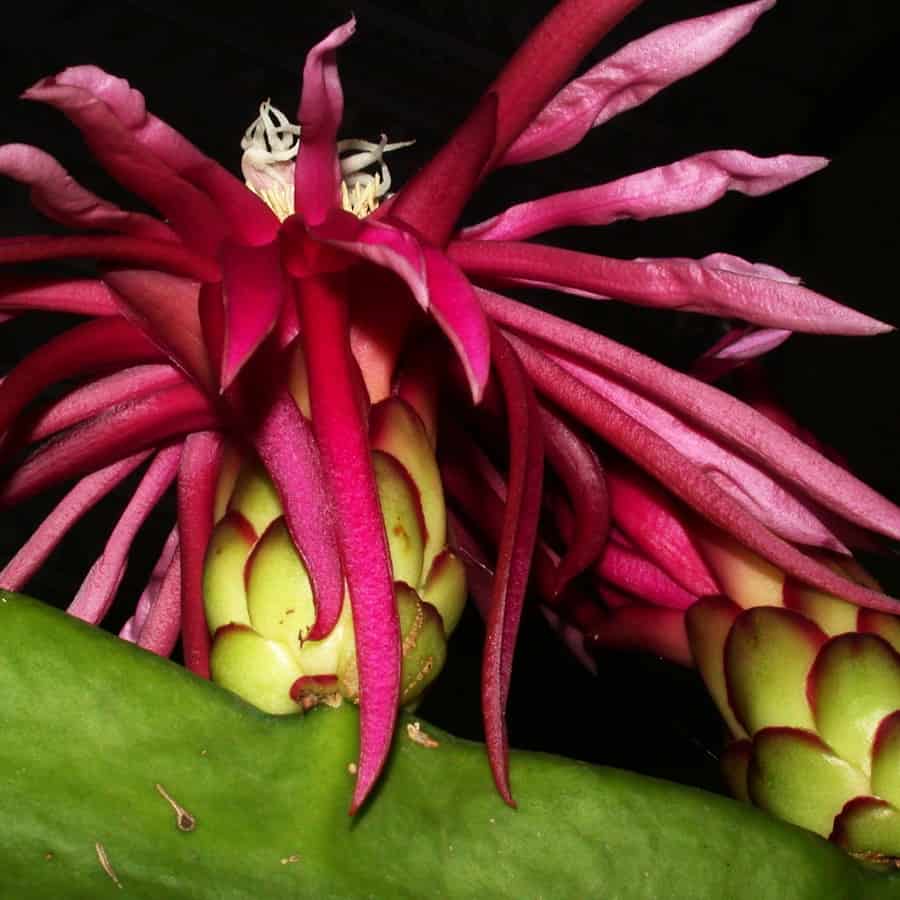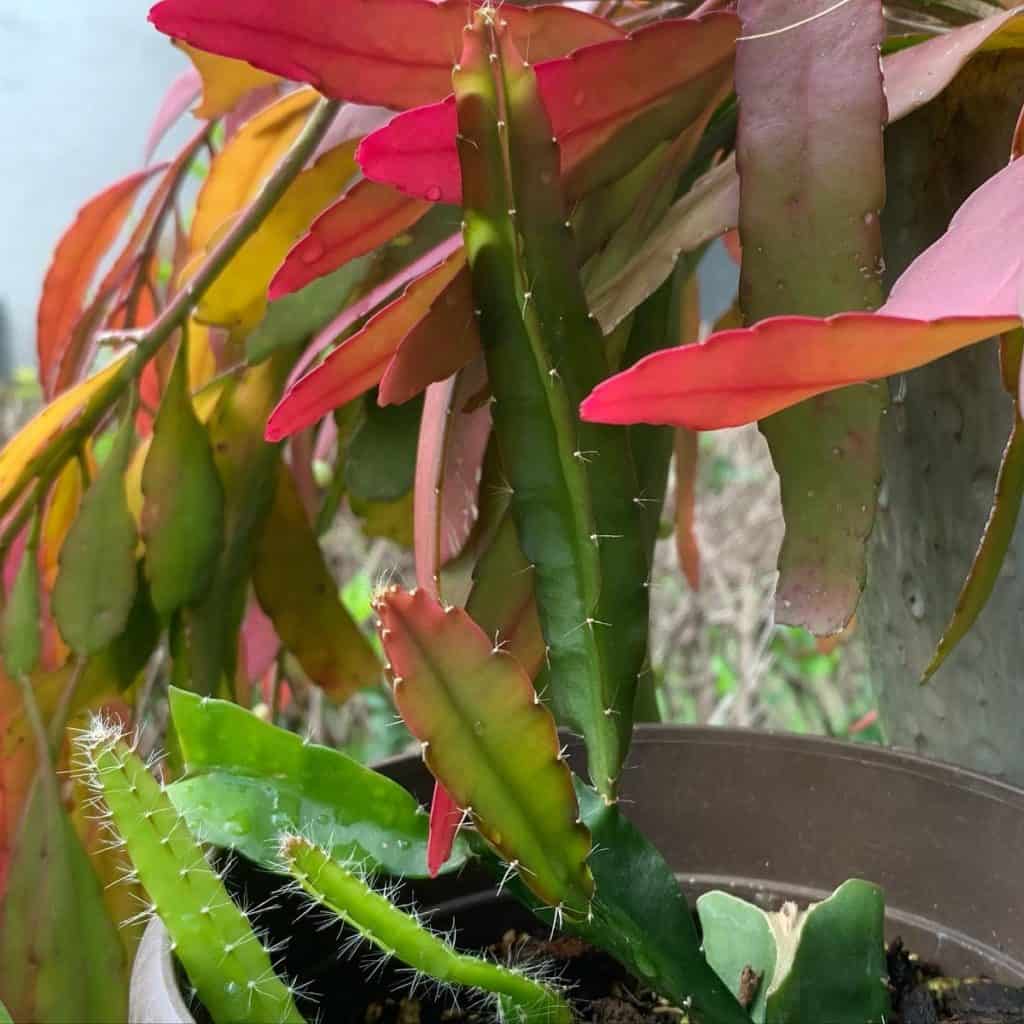Hylocereus stenopterus: Characteristics and Care
Prized for its delectable dragon fruit, the Hylocereus stenopterus is a remarkable cactus species that captures the imagination of fruit growers and plant enthusiasts alike. With its downward-trailing stems adorned by exquisite night-blooming flowers, this “orchid cactus” is not just a productive fruiting plant but a fascinating ornamental specimen.

Contents
About Hylocereus stenopterus
The star of the show, the Hylocereus stenopterus or red dragonfruit cactus, is a true showstopper that deserves its reputation. This unique cactus produces those coveted red-skinned, red-fleshed dragon fruits that have made it a prime candidate for cultivation worldwide. But it’s not just about the fruit – the plant itself is a marvel. Imagine multiple trailing green stems adorned with huge, fragrant blooms that unfurl only at night in a dazzling display, earning it the moniker “orchid cactus.” It’s a botanical double threat – a productive fruiting plant and an ornamental delight.
Related Post:
13 Types Of Hylocereus Cacti [With Pictures]
How to Care for Hylocereus stenopterus
Light
This cactus thrives in bright, direct sunlight, especially during its blooming months. Aim for at least 6-8 hours of direct sunlight each day or consider using a grow light for indoor plants. Just be careful not to overexpose it to intense sun during the hottest parts of the day, as it may scorch the stems.
Water
Like most cacti, the Hylocereus stenopterus is drought-tolerant and doesn’t require frequent watering. During the growing season (spring and summer), water it every 7-10 days, allowing the soil to dry out slightly between waterings. In the winter months, you can reduce watering to once a month or less.
Soil
To ensure proper drainage, plant your orchid cactus in a well-draining, sandy soil mix. A cactus or succulent potting mix works perfectly, or you can create your own by mixing regular potting soil with perlite or coarse sand.

Fertilizer
During the active growing season, feed your Hylocereus stenopterus with a balanced, water-soluble fertilizer every 4-6 weeks. Choose a fertilizer formulated specifically for cacti and succulents, and avoid over-fertilizing, which can lead to excessive growth and potential problems.
Temperature and Humidity
This cactus thrives in warm temperatures between 65-80°F (18-27°C) and prefers low humidity levels, making it an ideal houseplant or greenhouse resident in many regions.
Pests and Problems
Keep an eye out for common cactus pests like mealybugs, aphids, and spider mites. Treat any infestations promptly with insecticidal soap or neem oil. Additionally, watch for signs of root rot from overwatering or fungal infections, which can cause brown spots on the stems.
Pruning
As a climbing cactus vine, the Hylocereus stenopterus will need support and occasional pruning. Remove any side branches that emerge from newly planted stems until the plant is tall enough to reach a trellis or support structure. Prune off any dead, diseased, or crowded stems to maintain the plant’s health and shape.

Potting and Repotting
For container growing, choose a large pot (at least 15 gallons or 57 liters) with excellent drainage. Repot your orchid cactus every 2-3 years or when it becomes root-bound, using a fresh cactus potting mix.
Propagating Hylocereus stenopterus
One of the best things about the Hylocereus stenopterus is its ease of propagation, ensuring you can share or expand your collection of this captivating cactus. Here’s how:
From Seeds:
- Harvest seeds from ripe fruits by scooping out the pulp and rinsing the seeds
- Allow the seeds to dry overnight before planting
- Sow the seeds just below the soil surface in a well-draining potting mix
- Cover with plastic wrap to maintain moisture until germination (usually within 2-3 weeks)
- Transplant seedlings into individual pots once they develop their first set of true leaves
From Cuttings:
- Take 12-inch (30 cm) stem cuttings from a healthy parent plant during the growing season
- Allow the cuttings to callous over for 2-5 days until the cut ends turn white
- Plant the cuttings vertically, burying about 3 inches (8 cm) deep in a well-draining cactus mix
- Water sparingly until roots form and new growth appears
